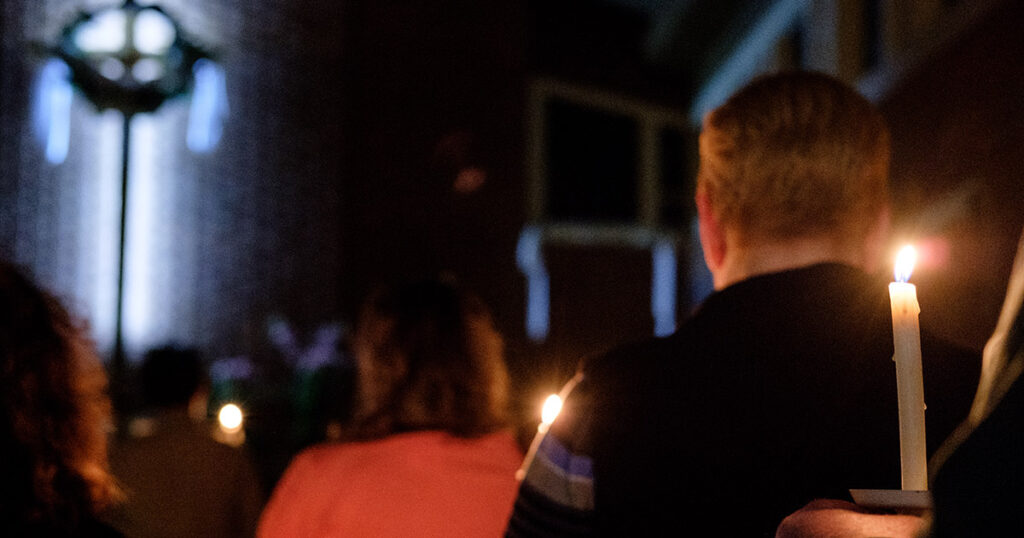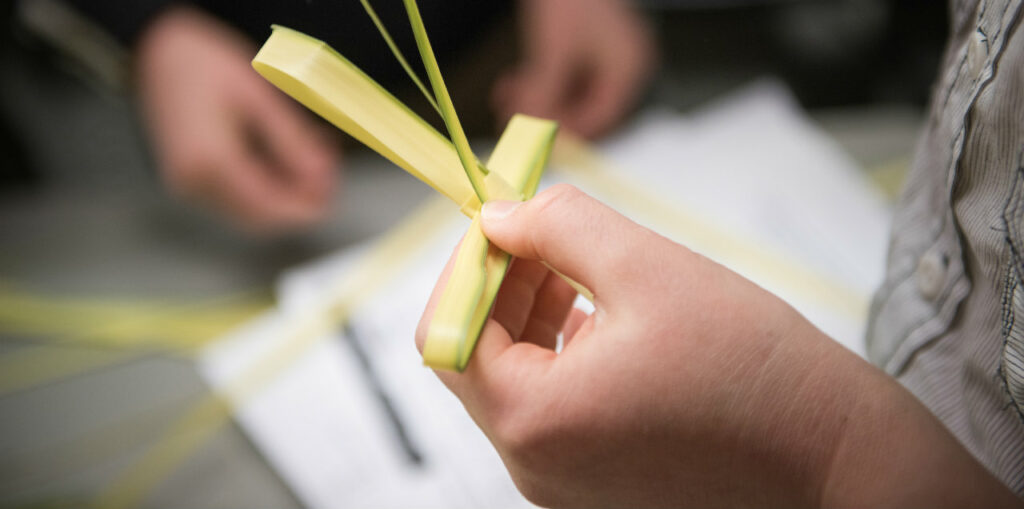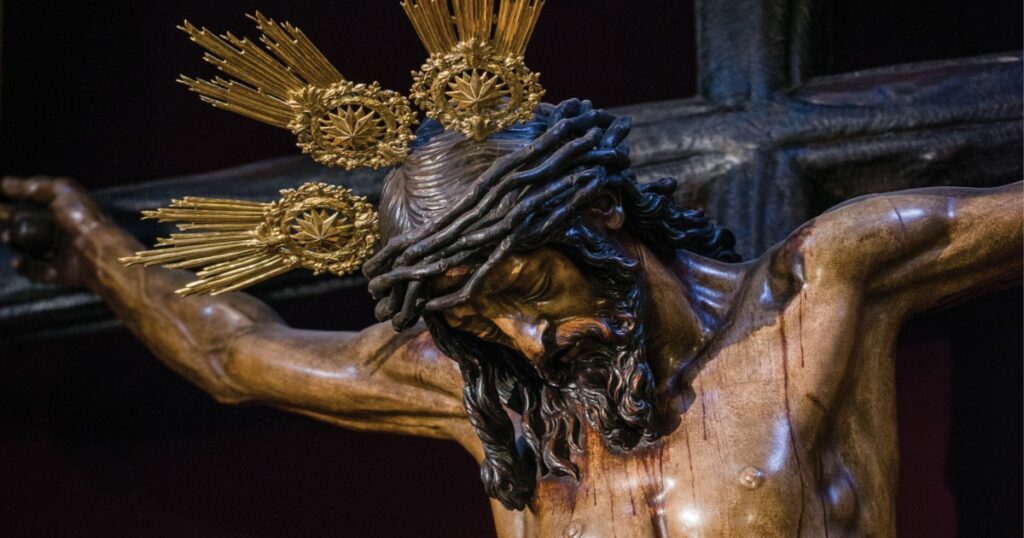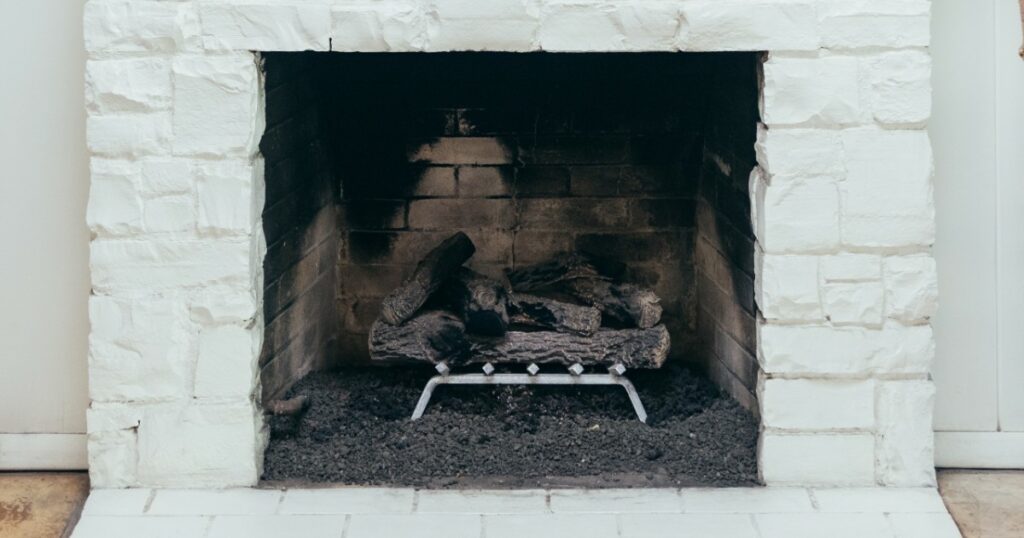The fire flickers in the courtyard near the newly budding redbud and beside an old, steel cross. One of the acolytes tends the flame, another adds a scoop of frankincense to the censor, and the rest stand erect, bearing their torches, waiting for the folks to gather around the newly lit flame. “This is the night.”
We need nights like this — nights that bounce from darkness to light, from death to life, from old to new and perishable to the imperishable. We need mystery and proclamation, the hearing of where we’ve been and the declaration of who we are now and what we shall be. “Beloved in the Lord, on this most holy night, in which our Lord Jesus passed over from death into life, we are gathered here in vigil and prayer. This is the Passover of the Lord in which, by hearing His Word and celebrating His Sacraments, we share in His victory over death” (Lutheran Service Book: Altar Book, 531).
The Easter Vigil service is truly unique. There’s nothing quite like it. The drama, the chanting, the candles, the fire — it’s a ritualist’s dream and one of the few services that captures the attention of our teenagers with their screen-induced stupor. Sadly, though, it has largely fallen from custom. What was once the primary service of the whole year now rarely interferes with our busy, Saturday schedules. Dear saints of God, “let our hearts be kindled with the fire of divine love and keep this joyful Easter festival that, burning with desire for life with Him, we may be found rightly prepared to share in the Feast of Light which has no end!”
The Service of Light
“Vigil” means “keeping watch” or “staying awake.” Traditionally, an all-night prayer service accompanied a major feast or festival (like Christmas Eve services). Time and eternity hold together in the vigil, connecting the past with what’s to come. In the case of the Easter Vigil, the Lenten journey to Passiontide and the sacred Triduum culminates in the resurrection of Christ, peered into first while keeping watch at night. And it was at night that the early Christians gathered, “while it was still dark” (John 20:1), full of expectation for Christ’s return. This movement from darkness to light finds cosmic fulfillment in the death and resurrection of Jesus. In Him, the darkness that once filled our heart is now scattered, and the true light raises our hearts to Him. And at the Easter Vigil, the lighting of the paschal candle from the new flame symbolizes this shift, accompanied by the pastor’s stole, changing from violet to white.
Then, the paschal candle leads the procession into the sanctuary, followed by all the faithful bearing their lights. We hear proclaimed three times, “The light of Christ” — symbolically portrayed by the candle’s entrance into the sanctuary of God — to which we joyfully respond, “Thanks be to God.” Thanksgiving and joy fill the sanctuary, a fitting praise for the God who is with us, again, risen from the dead. The Exsultet (Easter Proclamation) calls heaven and earth to rejoice at the light come upon them. The ancient darkness has been forever banished and the church of God is clothed in the brightness of His light. This is the night.
But which night? It’s the night of our Lord’s resurrection, to be sure. But thatnight — the night of all nights — is also the night of the exodus. This is the night when the Lord brought our fathers, the children of Israel, out of bondage in Egypt and led them through the Red Sea on dry ground. This is the night when the type gives way to the reality, the old to the new, the perishable to the imperishable and the mortal to immortality. This is the night when we, too, are risen from the dead, delivered from the bondage of sin and restored to life and immortality. Oh, how wonderful and beyond all telling is His mercy toward us. To redeem a slave, He gave His Son. He put wickedness to flight and washed away sin and restored innocence to the fallen and joy to the downcast. Dear saints, how blessed is the night when man is reconciled to God in Christ.
The Readings
To understand the fullness of this night — past, present and future — we turn back once more for just a bit. The Lenten posture resumes, purple dons the pastor and the Old Testament stories of salvation fill our ears with hope. These shadows and types have done their work. They’ve prepared the way of the Lord. From creation to the flood, the testing of Abraham to the deliverance at the Red Sea, the prophetic word makes even more sure this night — a night of Jonah’s true expulsion from the fish and Ezekiel’s rattling dry bones, crowned by the story and song of the three young men, delivered from the fiery furnace by one whose appearance is like that of a son of God. The Old Testament preaches Christ the crucified. And it’s these stories — stories of hope amid chaos — that give meaning to our proclamation, even as they acquire their substance from what came many years later. Nevertheless, the fitting response for all of creation to the Old Testament resurrection collage is to bless the Lord, praising Him and magnifying Him forever.
Service of Holy Baptism
But such praise is always embodied. It’s not just an idea or a word, but a life — a baptized life. So, on this holiest of nights, the whole church of our Lord Jesus Christ recalls His death and burial, rejoicing with great joy in the Gospel of His glorious and mighty resurrection from the dead. And what goes for Jesus goes for all those baptized into Him: “Do you not know,” St. Paul says, “that all of us who have been baptized into Christ Jesus were baptized into his death?” (Rom. 6:3). His death is our death; His resurrection raises us with Him. That’s why Baptism now saves you (1 Peter 3:21), because it assumes you into the life of Christ. And the Easter Vigil is, if nothing else, a baptismal service. Even when there are no catechumens eligible for Baptism, the congregation remembers her own and renews her renunciation of the devil, his works and his ways, along with her confession of God as Father, Son and Holy Spirit.
Service of Prayer
Dressed in white stole, hinting at the Easter character of the baptismal remembrance, the church then kneels for the litany of the resurrection — a litany recalling all that our Lord has done for us as the Paschal Lamb: destroying death by dying and by rising again, bringing life and immortality to light. Having rehearsed the narrative of that glorious third day and all that followed in its wake, the litany reaches its apex in the Easter acclamation. With words left unuttered for 40 days, they yet ring forth with unmatched joy: “Alleluia! Christ is risen! He is risen, indeed! Alleluia!”
Service of the Word
At this point the lights, which had been candlelight alone or dimmed so as just to see what is needed, now come on full force. The bare altar, stripped on Maundy Thursday, now gets vested in gold for the Eucharistic feast. The hymn of praise resounds. And another service begins. The Gospel of our Lord’s resurrection is read, while the ancient paschal homily of St. John Chrysostom proclaims the infinite mercy of our God, who is gracious and receives the last even as the first and who has become the firstfruits of all who sleep.
Service of the Sacrament
Finally, the church of God approaches the source and summit of all creation and redemption: the Sacrament of the Altar. Here is fulfilled what was proclaimed. Here the type gives way to reality, the shadow to the substance, the old to the new, and what was perishing to what remains forever. This is the night when heaven stoops to earth, for this is Christ. All that was stripped away for a time now returns — the alleluias and Gloria Patri ring out exuberantly. The Holy Communion is the end, the telos, but also the beginning, the arche. It is where we were always going, and at the same time, where we started.
The Easter Vigil dramatically symbolizes and delivers all that we believe, teach and confess. It is the resurrection. It is Baptism. It is the mystical union and life everlasting. Of course, so is every gathering of the faithful around Jesus. So, why the Easter Vigil? Because it is another opportunity to gather around Jesus and with Jesus. What sets it apart, perhaps, is the symbolic depth of its traditional rubrics. That is, there is a lot to see, taste, touch, smell and hear that all leads to the praise and glory of God and fills us with wonder. And whenever there is a chance to instill wonder and incite the imagination — especially of our children — toward what is true, good and beautiful, that is an opportunity not to be missed.






This year was my first Easter Vigil service since joining an LCMS congregation from a non-LCMS Lutheran background. It was refreshing to see the whole salvation story read aloud from Scripture from the Fall through the Flood, the Prophets and ultimately culminating in Christ. It was also an excellent experience to remember our Baptisms and receive Christ in the Lord’s Supper. My congregation was especially blessed as the Concordia University St. Paul choir performed for the service. I would highly recommend any congregation thinking of implementing an Easter Vigil service to do one next year!
Dear Pastor, thank you for your comprehensive breakdown of the significance of The Easter Vigil. It is a wonderful service and brings such hope and promise of our Lord Jesus. This is wonderfully spoken. God’s blessings to you and your family.